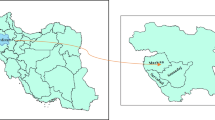Abstract
Although spill incidents at loading and unloading facilities account for only 4% of the chemical accidents that occurred in Korea during the last four years, the increase is incremental each year. Loading and unloading facilities are equipped with trenches in preparation for mass drainage because transports by vehicle are frequent and physical blocking is difficult when a release accident occurs. Particularly, in the case of a chemical release with a high vapor pressure, the trench is effective to mitigate accidents by reducing the liquid surface to primarily prevent dispersion. This study proposes an improved trench system that can effectively and rapidly withdraw large amounts of chemicals spilled from transport vehicles. Assuming a total volume leakage of a 55% hydrofluoric acid (HFA) solution from a transport vehicle, the study confirmed the risk-reducing effect by comparing using the consequence analysis program (ALOHA) and Probit analysis. The results show that minimizing the time that the released chemicals stay in the trench using control system (pH meter and automatic valve) can reduce the amount of chemicals vaporizing, thereby minimizing the effect distance of the release incident.
Similar content being viewed by others
References
KOREA NICS, Chemical Safety Clearing-house, csc.me.go.kr (2016).
C. H. Shin, S. J. Lee and J. H. Park, Crisisonomy, 13, 85 (2017).
KOREA ME, Chemicals Control Act, Ministry of Environment, me.go.kr (2016).
UK HSE, Storage of flammable liquids in tanks, Health and Safety Executive, www.hse.gov.uk/pubns/books/hsg176.htm (2015).
KOREA ME, Environmental White Paper, Ministry of Environment, me.go.kr (2016).
CAMEO CHEMICALS, cameochemicals.noaa.gov (2017).
United States Environmental Protection Agency, Risk Management Program Guidance for Offsite Consequence Analysis (2013).
C. H. Shin, B. C. Ma and J. H. Park, Crisisonomy, 12, 1 (2016).
KOREA NICS, Guidelines for Evaluating End Point of Chemical Accidents, nics.me.go.kr (2015).
American Industrial Hygiene Association (AIHA), AIHA Guideline Foundation, ERPG/WEEL Handbook (2015).
Center for Process Safety of the American Institute of Chemical Engineers (AIChE), Guidelines for Use of Vapor Cloud Dispersion Models, 2nd Ed. New York, AIChE J. (1996).
Y.-k. Jung, B. Kim, H. Heo, B. Yoo, C. Sin, Y. Yoon, J. Yoon and B. Ma, J. Korean Soc. Safety, 32(2), 52 (2017).
Y.-k. Jung, H. Heo, B. Yoo, Y. Yoon, J. Yoon and B. Ma, J. Korean Inst. Gas, 20(2), 49 (2016)
D. A. Crowl and J. Louvar, Chemical Process Safety (3rd Ed.) (2011).
Centre for Chemical Process Safety, Guidelines for Chemical Process Quantitative Risk Analysis, 2nd Ed. (1999).
Author information
Authors and Affiliations
Corresponding author
Rights and permissions
About this article
Cite this article
Shin, C.H., Yoon, Y., Park, J.H. et al. Design of the safety standard at hydrofluoric acid handling facilities for risk reduction. Korean J. Chem. Eng. 35, 1225–1230 (2018). https://doi.org/10.1007/s11814-018-0013-0
Received:
Accepted:
Published:
Issue Date:
DOI: https://doi.org/10.1007/s11814-018-0013-0




